Pro-Ject MaiA S3 Integrated Amplifier Review
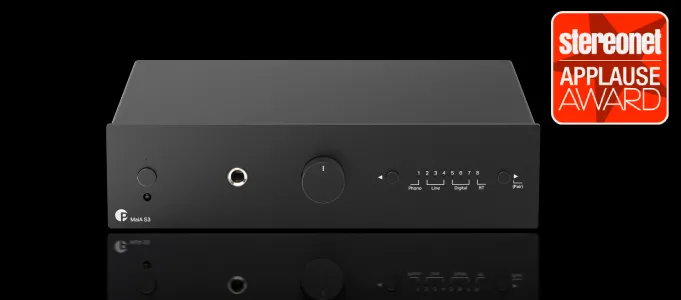
James Michael Hughes says that less is more with this diminutive, affordable integrated amplifier…
Pro-Ject
MaiA S3 Integrated Amplifier
£539
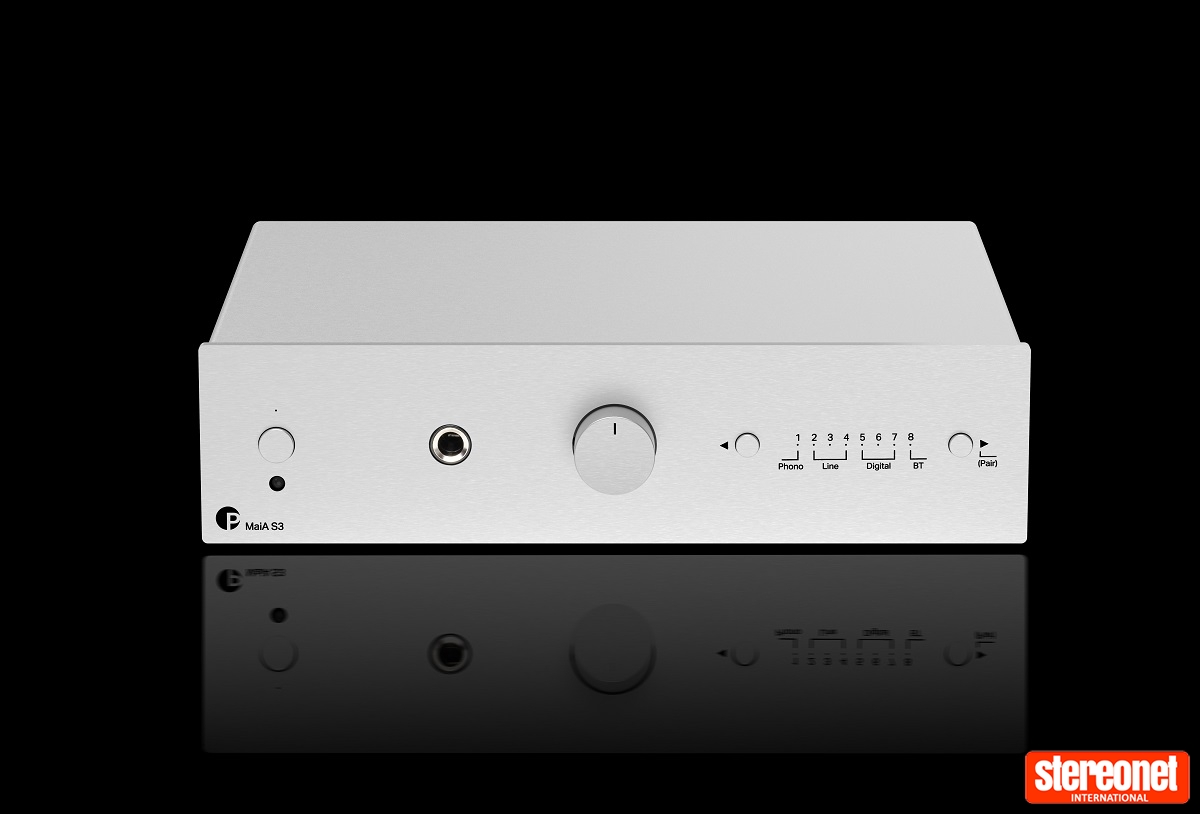
It might not influence your choice, but Pro-Ject's MaiA S3 is just 210x155x55mm. We'd doubtless consider it small if it were merely a line-level analogue preamp, but don't be fooled – it's much more than that. Indeed, it's a veritable Tardis among audio components.
As well as three line-level analogue inputs, the MaiA S3 has an MM phono stage, a Bluetooth DAC, plus a power amp with about 40W output. It even features a dedicated headphone amp. The unit is powered by an external PSU that accepts anything between 100v to 240V, 50/60Hz.
Being Class D, the amplifier is very efficient and runs cool. For those concerned about rising energy prices, the power consumption of the MaiA S3 is just a few watts, and in standby mode is less than 0.5W. The specs are very good, although harmonic distortion at full power (40W) is quoted at 1%. At 10W output, distortion drops to a more impressive 0.04% and stays low to about 25W. This is fine for most small rooms, especially if you have sensitive speakers.
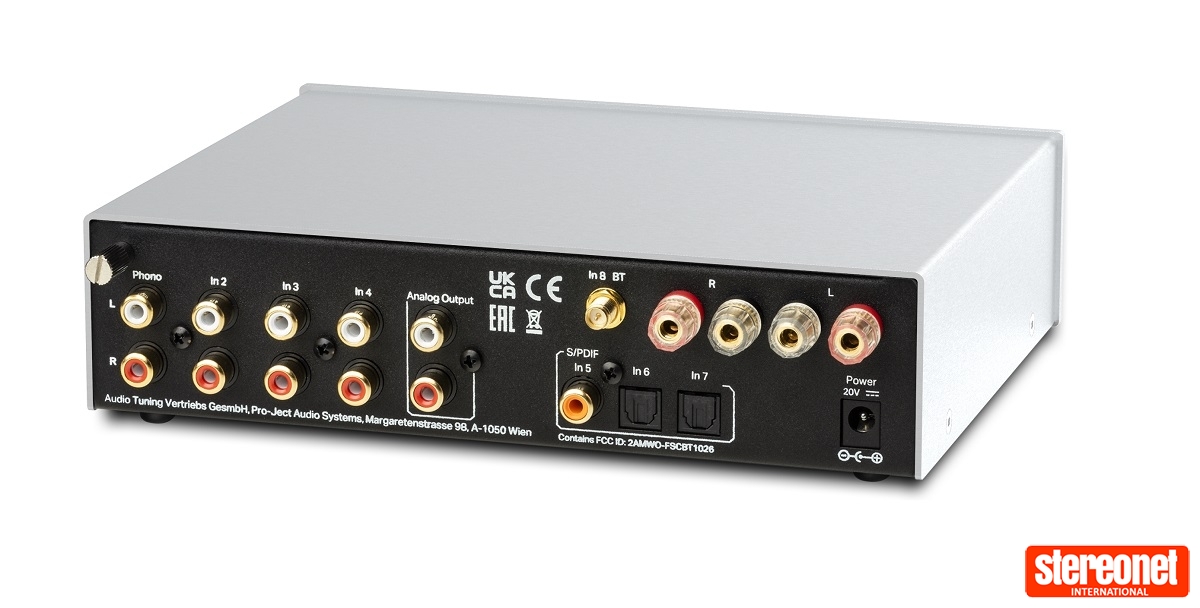
The MaiA S3's front panel is disarmingly simple – just a motorised volume control and an input selector. During use, the amp runs very cool; indeed, it doesn't get warm at all – not one bit. I began my review by playing silver discs, using a Heed CD transport with an Auralic Altair G2 as a DAC. Later, I connected the Heed directly to the MaiA S3's DAC.
As well as offering the MaiA S3 as a separate standalone item, Pro-Ject plans to bundle the amp as part of a system with loudspeakers and a turntable at a special price of around £1,400 – a saving of about ten percent over individual prices. It is to be known as Colorful Hi-Fi: The Debut Stereo System and will consist of Debut Carbon EVO turntable, MaiA S3 amp, Speaker Box 5 S2 speakers (in a matching paint finish to the Debut), Solid Core speaker cables and Damp-IT isolation feet for the speakers. In addition, a Pro-Ject DS2 T CD transport can be added for silver discs.
THE LISTENING
Can such a tiny amplifier really compare with amps that are five times the price, ten times the size, and twenty times the weight? Doesn't size matter? Isn't a bigger, more expensive amplifier always going to be superior? Don't you get what you pay for?
Yes, yes, and yes! Makers of expensive high-end audiophile amps can rest easy for the time being. But the new breed of Class D designs is definitely getting better. So I pitted the MaiA S3 against the Synthesis Roma 96DC+ valve amplifier to see how David fared against Goliath. With valves and a transformer-coupled Class A output stage, this is about as 'old school' as it gets. Despite similar power output, the Roma is massively larger, significantly heavier, runs much hotter, draws more power, and costs five times as much. Ah, vacuum tubes – what's not to like?
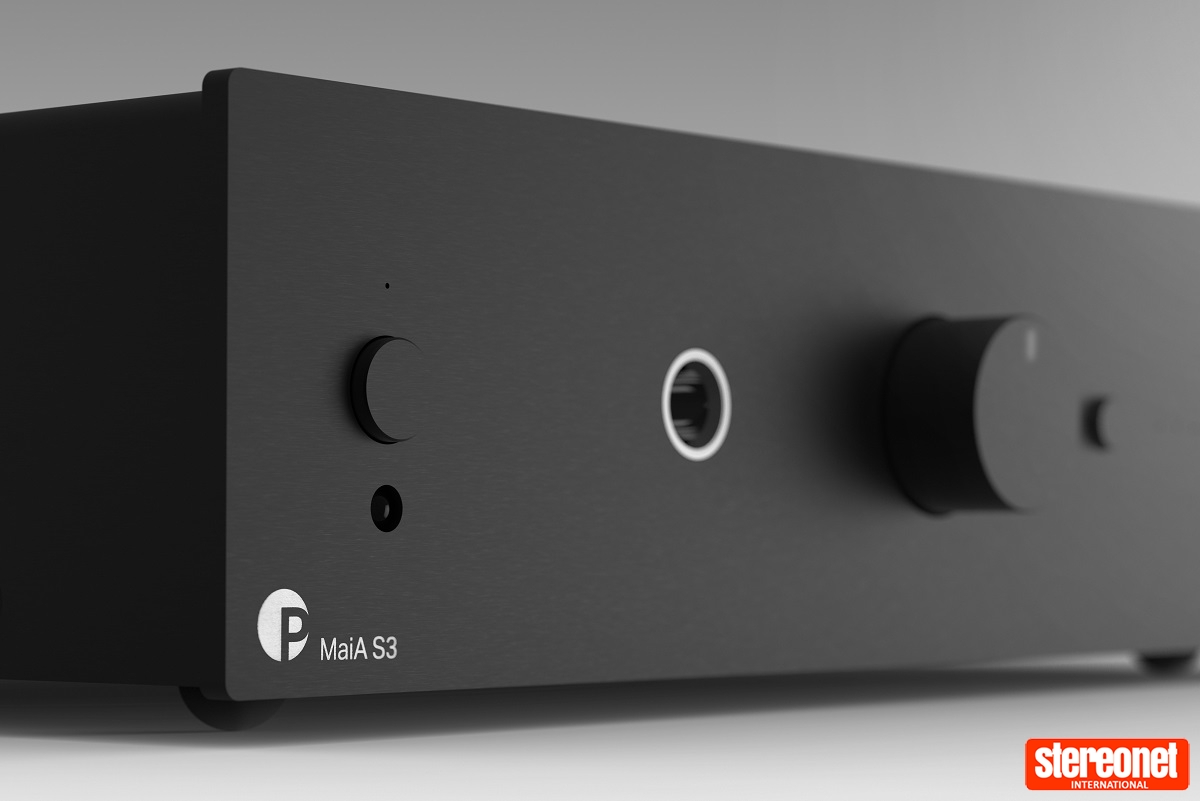
Going to the MaiA S3 from the Roma 96DC+, the first thing that struck me was the firmness and control of the S3. It sounded very precise, with not an ounce of fat anywhere. While the Roma was warm and inviting, the MaiA came over as lean and tight – crisp and detailed. A side benefit of the latter's small size is the fact that all signal paths are going to be very short. This should help increase crispness and clarity compared to an amplifier, where the circuit is spread over a much larger area and connecting wires are used.
The Roma's low end has a richer, more voluminous quality, and the overall sound is more spacious. The MaiA's bottom sounds tighter and more firmly controlled. But while a firm tight bass is usually classed as something positive, I found myself wanting just a bit more weight and roundness. The MaiA's bass lacks heft slightly; it's definitely a bit lean-sounding. As I listened longer, the amp seemed to settle down, and I grew less concerned by the lack of bass weight. The MaiA S3 doesn't 'warm up' as such. Indeed, it doesn't get mildly warm – even after being on all day.
So if there was a change in sound, and I didn't imagine it, I guess the amp was just burning in and settling down, despite having had some use before I received it. The MaiA S3 keeps bass instruments on a tight leash and doesn't allow the low end to get out of control. The result is a clean, firm bottom end, but low frequencies sound slightly reined-in - as though dynamic peaks were being restricted.
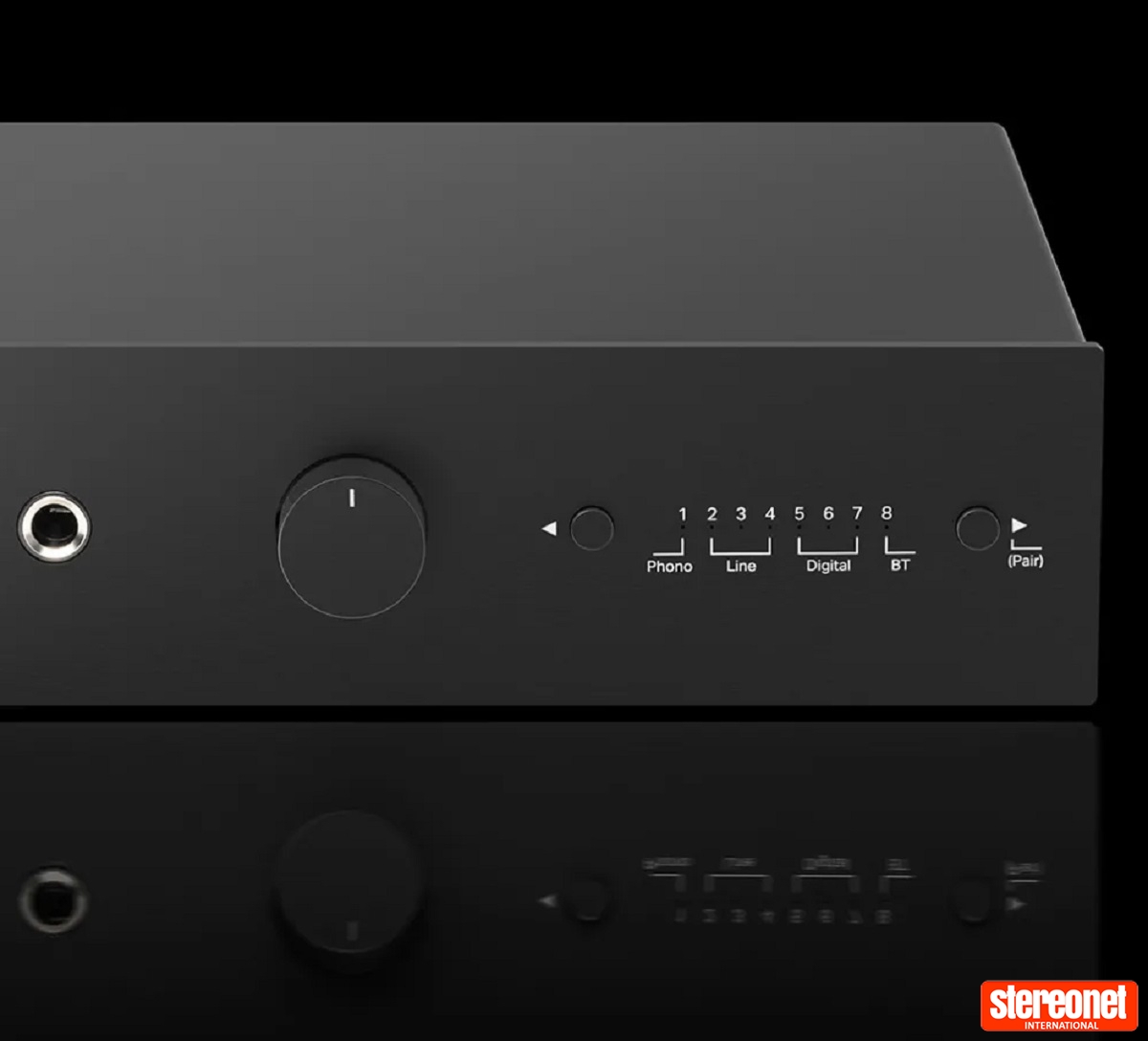
Playing Cowboys and Angels from George Michael's CD Listen Without Prejudice, the sound was cleaner and much less bass-heavy than usual. The bass line on this track is very deep and difficult to reproduce cleanly. On most hi-fi systems with decent bass depth, the track sounds boomy and smudged, but the MaiA S3 handled it well – albeit by reducing bass dynamics. Bass was controlled but less forceful.
Playing the album Song For My Father by The Horace Silver Quintet on CD, I was impressed by the MaiA's crisp attack and lack of overhang. This was especially noticeable on percussion instruments. Clarity and immediacy were quite remarkable at times. Notes seemed to start and stop with alacrity, giving music impressive focus and precision. There was nothing sloppy or vague – everything was solid and immediate. But the MaiA's presentation was perhaps slightly dry and regimented compared to the Roma.
While the MaiA S3 could seem a tad circumspect on CD, its concentration and precision were notable. The music sounded focused, crisp, and controlled, albeit just a wee bit inhibited. However, these impressions changed when I went over to vinyl sources. The Pro-ject has an excellent MM phono stage. The musical presentation immediately eased up on vinyl and grew noticeably more fluid. The focus and precision remained, but that slightly claustrophobic, over-controlled tightness seemed to vanish. Bass was suddenly much fuller and more voluminous.
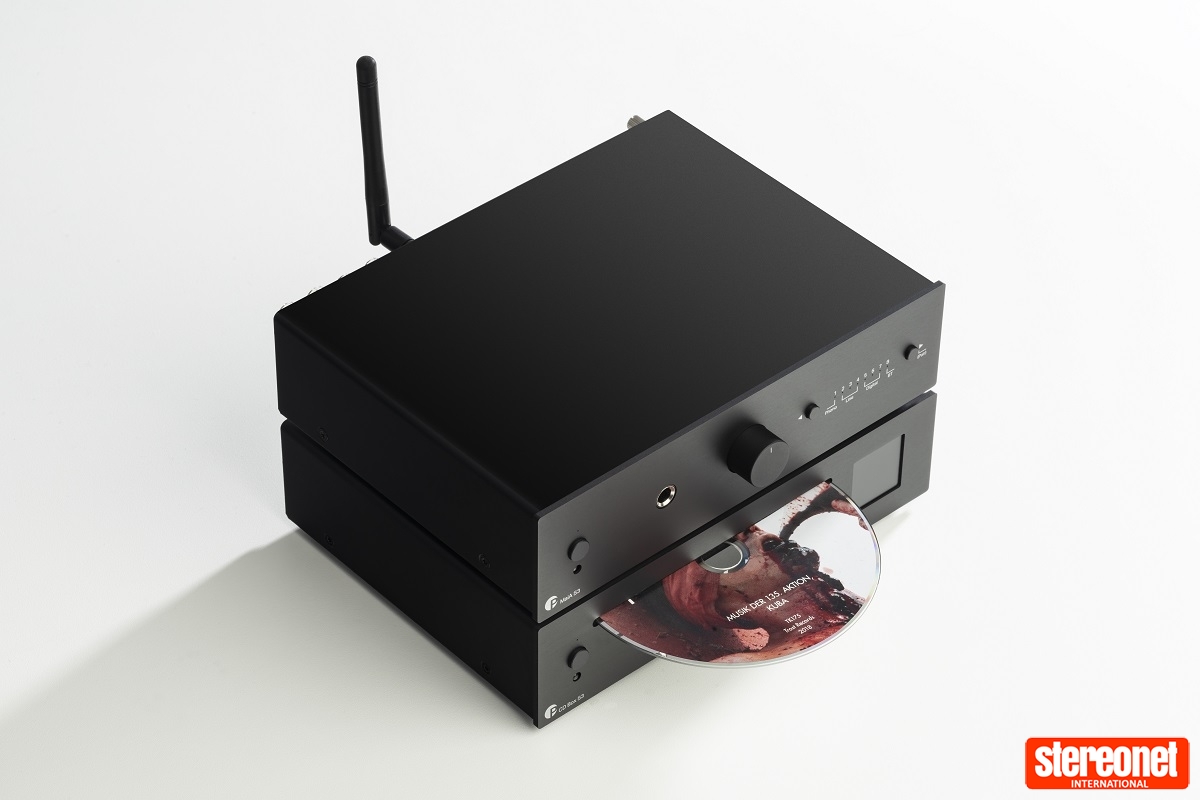
Playing Lose Again from Linda Ronstadt's album Hasten Down the Wind, I was impressed by the weight and fullness of the reproduction. The sound had good depth and sense of scale, with a strong, powerful, warm bass.
I next tried Marcella's Dream from The Crusaders' album Images. This confirmed excellent timing, though this same track via the Synthesis Roma 96DC+ saw the tube amp convey a greater sense of space and ambience. The Roma sounded rich and full, while the MaiA S3 was lean and tight. Both were good, and while my preference was for the Roma, remember that the MaiA S3 is just one-fifth of the price. So the less expensive amp was by no means outclassed; the Roma wasn't five times better. This speaks volumes…
Keeping with vinyl, that old favourite Jazz by Ry Cooder sounded engagingly holographic and tonally very natural. A recording that literally bristles with subtle detail when reproduced well; I was very pleasantly surprised and impressed by what I heard.
Returning to Compact Disc, I immensely enjoyed Schubert's Works for Violin and Piano on Deutsche Grammophon with Gidon Kremer and Valery Afanassiev. Using the MaiA S3's in-built DAC, subtle shadings of tonal colour and dynamics made the playing sound very involving and expressive. Indeed, the DAC in the MaiA S3 is very good. The Auralic DAC sounds more detailed and incisive, but given the MaiA's crisp forward presentation, that wasn't altogether beneficial.
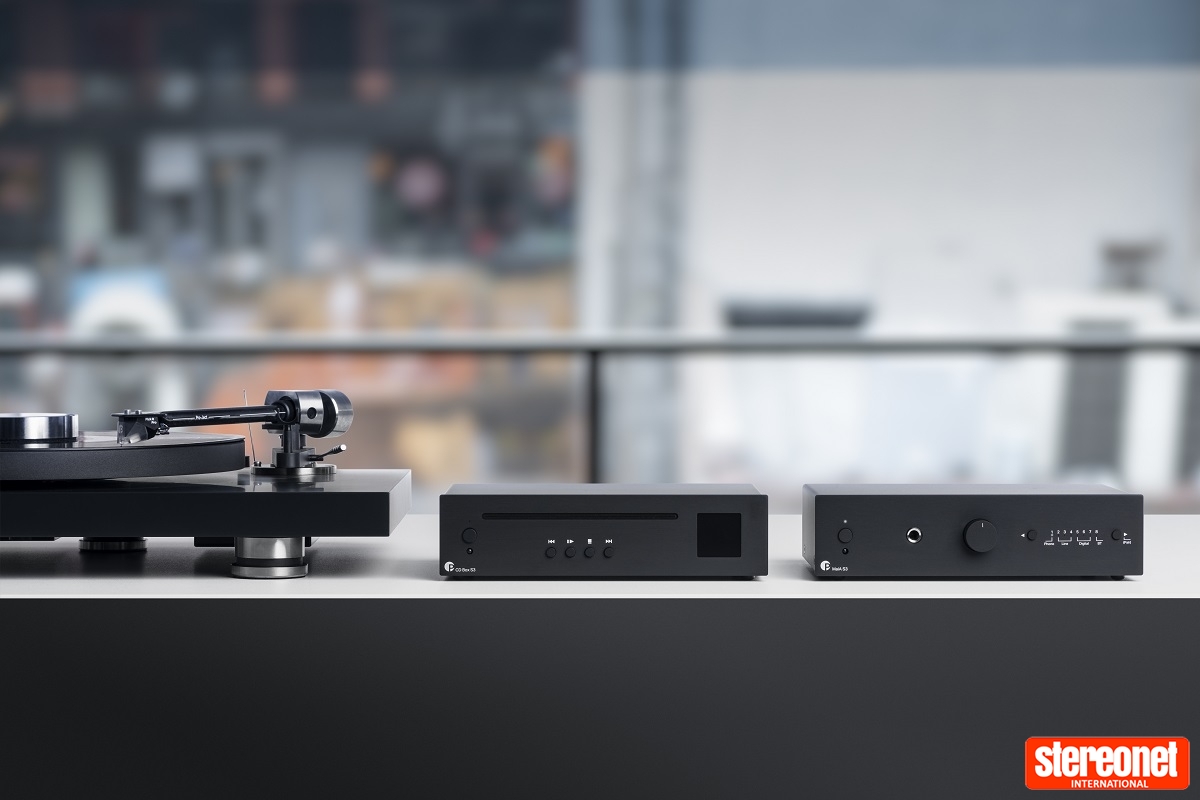
Because the Pro-Ject's internal DAC was warmer and sweeter than the Auralic, on balance, I slightly preferred it. However, unlike some DACs, the MaiA S3 has no USB input; it's coaxial and optical only. Nor do you get the faux luxury of switchable anti-aliasing filters that typically make little or no audible difference! But joking aside, the MaiA's DAC is perfectly good and leaves nothing to be desired.
By now, the MaiA S3 was almost starting to give the Roma 96DC+ a bit of a run. Okay, it was never quite as creamy-rich and alluring, but at times it didn't seem so massively far behind. Sure, you'd notice the Roma's extra depth, space, and liquid fluidity on direct comparison. But after an hour or so, as one's aural memory starts to fade, the MaiA S3 almost convinces you otherwise, especially when playing vinyl. In addition, the MaiA S3 proved breathtakingly quiet in terms of noise. There's no hum or residual hiss, even using very efficient speakers.
Likewise, the MM phono stage is as quiet as it gets. Using a low-output MC cartridge via a Music First step-up transformer, I could hear no hiss at normal listening levels, even with my ear right close to the loudspeakers. There's no mechanical buzz from the unit – it's totally silent!
THE VERDICT
 No question about it; the Pro-Ject MaiA S3 is going to appeal to lots of people. Despite being tiny, it is hugely versatile, sounds excellent, runs cool, and sells for a very reasonable price. For those just wanting a good, small, simple, fuss-free amplifier, the MaiA S3 will be perfect; just the ticket. It is a terrific value, then. While you might find an amplifier that sonically out-points it in areas such as richness and warmth, anything significantly better is likely to be much bigger and heavier. The choice, my audiophile friends, is yours!
No question about it; the Pro-Ject MaiA S3 is going to appeal to lots of people. Despite being tiny, it is hugely versatile, sounds excellent, runs cool, and sells for a very reasonable price. For those just wanting a good, small, simple, fuss-free amplifier, the MaiA S3 will be perfect; just the ticket. It is a terrific value, then. While you might find an amplifier that sonically out-points it in areas such as richness and warmth, anything significantly better is likely to be much bigger and heavier. The choice, my audiophile friends, is yours!
Visit Pro-Ject for more information
James Michael Hughes
An avid audiophile for many decades, Jimmy has been writing about hi-fi since 1980 in a host of British magazines, from What Hi-Fi to Hi-Fi Choice. Based in London, England, he’s one of the UK’s most prolific record and CD collectors – no streaming service can yet match his amazing music collection!
Posted in: Amplifiers | Integrated Amplifier | Applause Awards | 2022 | Hi-Fi
JOIN IN THE DISCUSSION
Want to share your opinion or get advice from other enthusiasts? Then head into the Message
Forums where thousands of other enthusiasts are communicating on a daily basis.
CLICK HERE FOR FREE MEMBERSHIP
Trending
applause awards
Each time StereoNET reviews a product, it is considered for an Applause Award. Winning one marks it out as a design of great quality and distinction – a special product in its class, on the grounds of either performance, value for money, or usually both.
Applause Awards are personally issued by StereoNET’s global Editor-in-Chief, David Price – who has over three decades of experience reviewing hi-fi products at the highest level – after consulting with our senior editorial team. They are not automatically given with all reviews, nor can manufacturers purchase them.
The StereoNET editorial team includes some of the world’s most experienced and respected hi-fi journalists with a vast wealth of knowledge. Some have edited popular English language hi-fi magazines, and others have been senior contributors to famous audio journals stretching back to the late 1970s. And we also employ professional IT and home theatre specialists who work at the cutting edge of today’s technology.
We believe that no other online hi-fi and home cinema resource offers such expert knowledge, so when StereoNET gives an Applause Award, it is a trustworthy hallmark of quality. Receiving such an award is the prerequisite to becoming eligible for our annual Product of the Year awards, awarded only to the finest designs in their respective categories. Buyers of hi-fi, home cinema, and headphones can be sure that a StereoNET Applause Award winner is worthy of your most serious attention.





